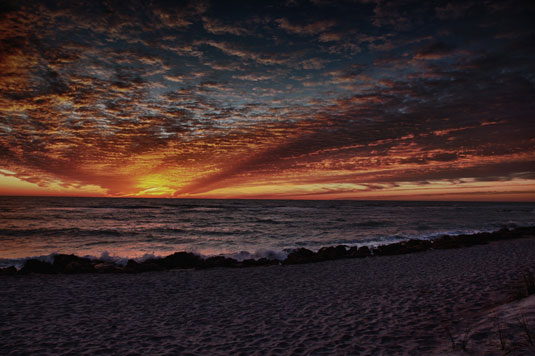Sunsets are wonderful scenes for nature photographers. However, a sunset with a beautiful landscape often has a wider range than the camera can handle. The camera compromises and delivers an image with a properly exposed landscape but a sky that is way too bright.
When you see an image like that on your camera LCD monitor, here are five things you can try:
Use a graduated neutral density filter if the sun is still fairly high in the sky. This filter darkens the top of the sky without changing the colors. The filter gradually lightens until it lets all the available light reach the sensor.
Use a reverse neutral density filter if the sun is near the horizon. This filter darkens the sky near the horizon and gradually lets all the light reach the sensor at the top of the frame.
Hide the sun behind a tree or wait for a cloud to partially eclipse the sun. When you hide the sun, you decrease the dynamic range so that the camera can correctly render the dark areas of the image and the sky without too much of a compromise.
Bracket exposures and merge the exposures in a photo-editing application. Most cameras will let you capture three bracketed exposures with a range from –3 EV to +3 EV. For more information on shooting HDR images, see Chapter 12.
Use exposure compensation to decrease the exposure. When you decrease the exposure, the sky will be darker. Depending on the scene, you may have to decrease the exposure enough to render the landscape and foreground objects as silhouettes.


